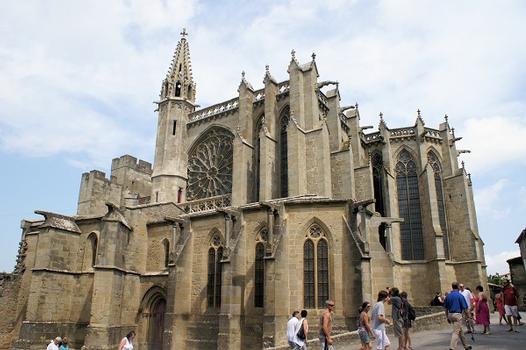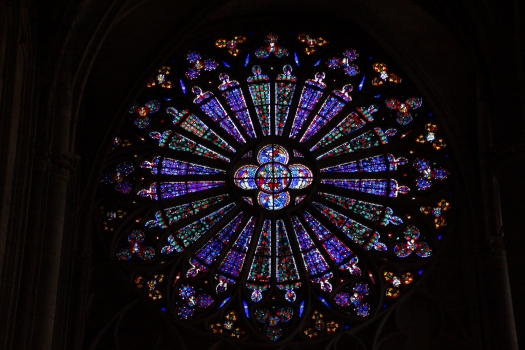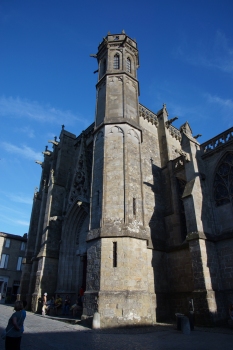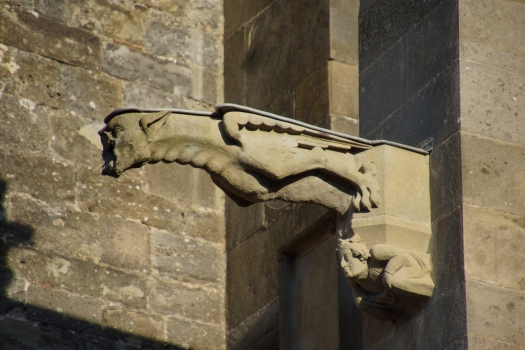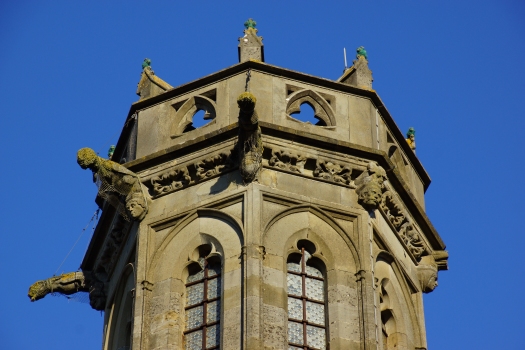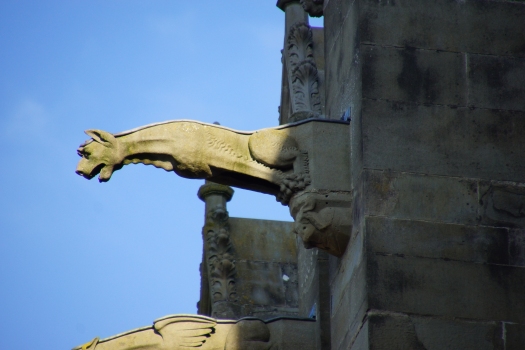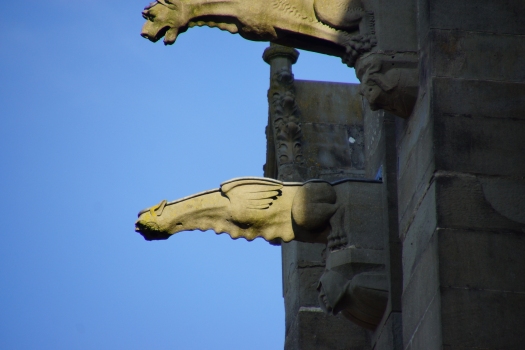General Information
| Other name(s): | Basilique Saint-Nazaire |
|---|---|
| Status: | in use |
Project Type
| Function / usage: |
Church |
|---|---|
| Material: |
Masonry structure |
| Structure: |
Rib vault |
| Architectural style: |
Romanesque Gothic |
Location
| Location: |
Carcassonne, Aude (11), Occitanie, France |
|---|---|
| Coordinates: | 43° 12' 19" N 2° 21' 47" E |
Technical Information
Dimensions
| interior length | 59 m | |
| nave | width | 16 m |
| transept | length | 36 m |
Excerpt from Wikipedia
The Basilica of Saints Nazarius and Celsus (French:Basilique des Saints Nazaire et Celse) is a Roman Catholic minor basilica located in the citadel of Carcassonne, France. It is a national monument, and is in the Gothic-Romanesque architectural tradition.
History
Visigothic church
The original church is thought to have been constructed in the 6th century during the reign of Theodoric the Great, ruler of the Visigoths.
Cathedral of Carcassonne
On 12 June 1096, Pope Urban II visited the town and blessed the building materials for the construction of the cathedral. Construction was completed in the first half of the twelfth century. It was built on the site of a Carolingian cathedral, of which no traces remain. The crypt too, despite ist ancient appearance, dates from the new construction.
Around the end of the 13th century, during the rule of kings Philip III, Philip IV, and the episcopates of Pierre de Rochefort and Pierre Rodier, the cathedral was reconstructed in the Gothic style. It remained the cathedral of Carcassonne until 1803, when it lost the title to the present Carcassonne Cathedral (Cathédrale Saint-Michel de Carcassonne).
Basilica
The Church of Saints Nazarius and Celsus obtained the status of historical monument in 1840. Around this time, the architect Eugène Viollet-le-Duc renovated the church along with the rest of the citadel. In 1898, the church was elevated to a minor basilica.
Architecture
The sandstone basilica's floor plan is based on a Latin cross, internally measuring 59 m in total length, 16 m in nave width, and 36 m along the transept. The oldest part of the church is the Romanesque tripartite nave. The main entrance in ist north wall is formed by a Romanesque portal of five receding arches over two doors. A fortress façade forms the west wall, as is common for medieval Languedocian church buildings.
The transept and choir were rebuilt in the Gothic style. The larger windows in this part of the church permit a better illumination compared to the darker romansque nave. The central stained glass window of the choir from 1280 is one of the oldest ones in the south of France. Together with the upper trefoils (the Resurrection of Jesus and the Resurrection of the dead), it depicts the life of Jesus in 16 medallions:
Depictions on the 1280 stained-glass window Descent from the Cross Entombment of Jesus Christ carrying the Cross Crucifixion of Jesus Arrest of Jesus Flagellation of Jesus Triumphal entry into Jerusalem Last Supper Massacre of the Innocents Christ among the Doctors Presentation of Jesus at the Temple Flight into Egypt Nativity of Jesus Adoration of the Magi Annunciation Visitation
Text imported from Wikipedia article "Basilica of Saints Nazarius and Celsus" and modified on June 3, 2020 according to the CC-BY-SA 4.0 International license.
Participants
Currently there is no information available about persons or companies having participated in this project.
Relevant Web Sites
Relevant Publications
- (1973): L'ancienne cathédrale Saint-Nazaire de Carcassonne. Presented at: Congrès archéologique de France, 131ème session, Pays de l'Aude. 1973, pp. 548-572.
- (1973): Le décor sculpté de la cathédrale Saint-Nazaire de Carcassonne. Presented at: Congrès archéologique de France, 131ème session, Pays de l'Aude. 1973, pp. 573-594.
- (1985): Languedoc roman. Editions Zodiaque, Saint-Léger-Vauban (France), pp. 28.
- About this
data sheet - Structure-ID
20012500 - Published on:
21/07/2004 - Last updated on:
09/09/2017

